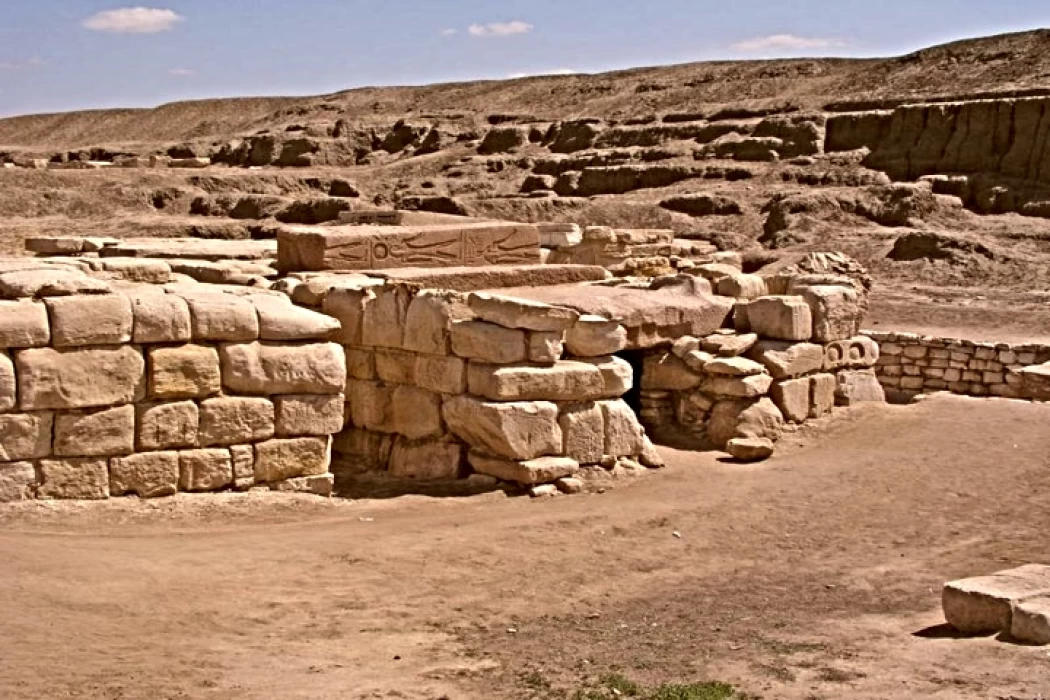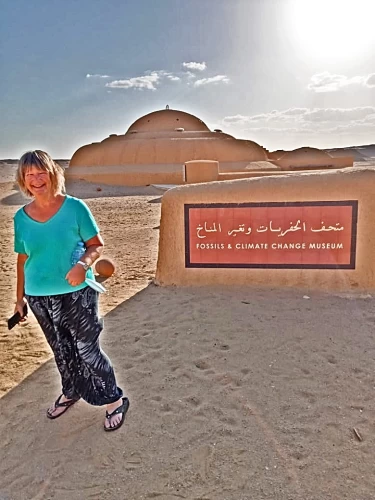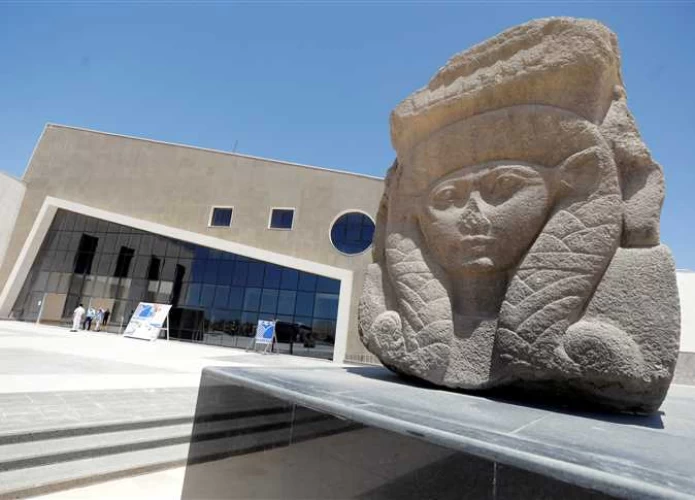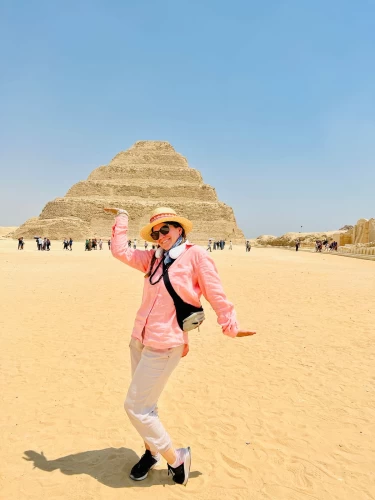
Tanis: The Lost City of the Pharaohs
History of Tanis
In the northeast of the Nile Delta in the Sharqia Governorate, about 150 km from Cairo, lies the city of “Tanis”, which is currently known as the city of “San El-Hagar”, that historical city or unknown capital that was founded on the banks of the Nile thousands of years ago, and was also known as “Ga’net” and “Sa’an”.
When was the city of San El-Hagar “Tanis” founded?
Determining the founder of the city or the period of its establishment is not easy, given the difficulty of ancient historical complexities and the development of cities over the ages.. But it is believed that King “Smendes” played a major role in its establishment about 3000 years ago - approximately in 1070 BC - at the beginning of the Twenty-First Dynasty, as the king chose it to be his political and religious capital instead of the city of Thebes, and this historic city began to flourish during the reign of this 21st Dynasty and the dynasties that followed it, until it became an important center for the worship of the god Amun and the god Set.
The city was founded during the New Kingdom, and witnessed its peak prosperity during the Twenty-first Dynasty when it became the capital of Northern Egypt. The city was home to many of the pharaohs who ruled during this period, including King Psusennes I, who was known for his tomb rich in treasures.
The Unknown Capital of Egypt
The city became an important political and military center during the reign of the Twenty-Second Dynasty (between 945 and 712 BC), when King Shoshenq moved the capital to Tanis, and as such the city continued to flourish during the reign of the Twenty-Third and Twenty-Fourth Dynasties. This city was a mirror reflecting the greatness and power of the pharaohs, where art and politics combined with the spirituality of ancient worship. From within the walls of its temples and palaces, the voice of the ancient Egyptians resounded with the greatness of their wisdom and power, as Tanis, or San El-Hajar - currently - was not just a city, but rather the capital of the spirit and civilization.
The city's obliteration and rediscovery
Over the ages, the city’s historical landmarks were obscured under the sands of time, but they were never forgotten. Archaeologists rediscovered it and found treasures and secrets of history. Its discovery was a window through which we could look at the greatness of the past, the eras of prosperity and the ancient Egyptians’ ability to create endlessly. The archaeological importance of Tanis became clear after the discoveries of the French scientist Pierre Montet in the 1930s. Tanis was known for its monuments and temples built in honor of the ancient Egyptian gods, and for its statues and inscriptions bearing the names of the kings and pharaohs who ruled from it, as well as its towering obelisks, some of which were recently transferred to Cairo, where one of them was placed in Tahrir Square and the other in the Grand Egyptian Museum.
Tanis, or San El Hagar as we call it today, is not just a place on the map or an archaeological site. It is a story of civilization, a story told by hieroglyphic stone inscriptions. It is part of Egypt’s eternal identity, always reminding us that the Egyptians are the heirs to the greatest civilizations known to history.
At present, San El Hagar, which is also called “Tanis”, is an archaeological site that impresses many archeologists and tourists alike who seek to understand the history of the place that remains a mystery due to many factors including the untapped potential it possesses and the history it has not been given. The region has witnessed a lot of changes, however, the city has not yet endeavored enough which would elevate it to its deserved status as one of the dominating capitals of ancient Egypt during the times of the Pharaohs, and currently it has not reached a stage beyond being an excavated site, situated in one of the districts of Sharqia Governorate.
Tanis Treasures in World Museums
There are many Pharaonic treasures that have been discovered in San El Hagar, some of which have been transferred to Egyptian and international museums. Among the museums that display part of these treasures are:
- The Egyptian Museum: Apart from statues, decorative ornaments, and various antiquties belonging to the ancient period of Egypt, the Cairo based Egyptian Museum exhibits a lot of artifacts unearthed from Tanis - San El Hagar.
- The Louvre in Paris lends out: The Museum of the Louvre possesses a few important objects that reached it from San El Hagar, besides showcasing extensive collections of artifacts from Ancient Egypt.
Latest Articles
Admin
Aswan Governerate in Egypt
Aswan was known as ‘Sonu’ in ancient Egyptian times, meaning market, as it was a trading centre for caravans coming to and from Nubia. In the Ptolemaic era, it was called ‘Sin’ and the Nubians called it ‘Yaba Swan’. It was also known as the Land of Gold because it served as a great treasure or tomb for the kings of Nubia who lived there for thousands of years. Before the migration, Aswan's borders extended from Asna in the east to the border of Sudan in the south, and its inhabitants were Nubians, but after the Islamic conquest of Nubia, some Arab tribes settled there.
Admin
About Luxor Governorate in Egypt
The South Upper Egyptian area is home to the Egyptian governorate of Luxor. Its capital is Luxor, which was formerly Thebes, the capital of Egypt throughout multiple pharaonic eras. Its centers and cities are spread over both sides of the Nile River. The said governorate was established by Presidential Decree No. 378 of 2009, which was promulgated on the 9th of December of that year.
Admin
History of kafr El Sheikh Governorate
Kafr El Sheikh Governorate, located in the far north of Egypt in the Nile Delta, overlooking the Mediterranean Sea, is characterised by the diversity of natural life and environments, and is one of the Egyptian cities that can be visited after the end of the first semester exams at universities and schools, as it features many diverse tourist and recreational places at symbolic prices within everyone's reach.
Admin
Egypt's New Administrative Capital
The New Administrative Capital is considered the project of the era because it reflects a perfect image of the future and progress on the economic, cultural, social and civilisational level, as the capital is considered the new capital of Egypt at the present time. The importance of the New Capital is that it is a comprehensive transformation of the future of buildings, services and national and mega projects in Egypt.
Admin
Al Gharbia Governorate
The Governorate of Gharbia is inclusive in the geographical area of The Arab Republic of Egypt which is in the African continent, more specifically in the region surrounding the Nile delta, between Damietta and Rashid governance. To the control of the region from the north is Kafr El-Sheikh Governorate, from the south Menoufia Governorate, from the east – Dakahlia, Qalyubia Governorates, and to the west is the Beheira Governorate.
Admin
Hamata Islands (Qulaan Archipelago) in Marsa Alam
Each reserve has several sectors. In Wadi El Gemal Reserve, there is one of the natural areas called the Hamata area or Hamata sector in Wadi El Gemal Reserve. Its sectors are the perfect and most ecological, land and water, and host countless animals and plants found in the oceans and on the land.

















